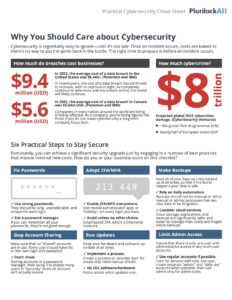In the ever-evolving landscape of cybersecurity, one term that consistently sends shivers down the spine of individuals, organizations, and nations alike is “malware.” Short for malicious software, malware encompasses a broad range of digital threats designed to compromise, damage, or exploit computer systems, networks, and data. This deep dive into malware aims to shed light on its nature, significance, and the complex web of challenges it poses to the digital world.
Understanding Malware
Definition and Categories
Malware, in its simplest form, is any software created with malicious intent. It can manifest in various types, each serving a distinct purpose in the cyber threat ecosystem. The primary categories include:
- Viruses: Self-replicating programs that attach themselves to legitimate executable files, spreading when these files are executed.
- Worms: Standalone programs that can replicate and spread independently, typically exploiting vulnerabilities in network protocols.
- Trojans: Disguised as legitimate software, Trojans trick users into installing them, often leading to unauthorized access or data theft.
- Ransomware: Encrypts a user’s files and demands a ransom for their release, posing a severe threat to both individuals and businesses.
- Spyware: Monitors and collects sensitive information, such as login credentials, without the user’s knowledge.
- Adware: Displays unwanted advertisements and often comes bundled with seemingly harmless software.
Delivery Mechanisms
Malware employs various delivery mechanisms to infiltrate systems:
- Email Attachments: Malicious attachments in seemingly innocent emails exploit human curiosity and trust.
- Drive-by Downloads: Users unknowingly download malware when visiting compromised websites.
- Infected External Devices: Malware can spread through USB drives and other external devices.
- Phishing: Malicious websites or emails mimic trusted entities to trick users into revealing sensitive information.
- Software Vulnerabilities: Exploiting flaws in software or operating systems is a common strategy for malware delivery.
Why Malware Matters
Economic Impact
The consequences of malware are not limited to technological disruptions. Its economic impact is substantial, affecting individuals, businesses, and entire economies. The costs associated with malware include:
- Financial Loss: Ransom payments, stolen funds, and the costs of recovering from a cyber-attack can cripple businesses financially.
- Productivity Downtime: Malware-induced disruptions can halt operations, leading to significant productivity losses.
- Reputation Damage: Breaches often result in reputational damage, eroding the trust of customers, clients, and partners.
National Security Implications
Beyond economic concerns, malware poses a grave threat to national security. State-sponsored malware attacks can target critical infrastructure, compromise sensitive information, and disrupt essential services. The Stuxnet worm, for instance, famously targeted Iran’s nuclear facilities, showcasing the potential for malware to be used as a tool of geopolitical influence.
Privacy Invasion
Malware is a potent instrument for invading individual privacy. Spyware, in particular, can surreptitiously collect personal data, from browsing habits to login credentials, leading to identity theft and unauthorized access to sensitive information.
Exploitation of Emerging Technologies
As technology advances, so does the potential for innovative malware. The Internet of Things (IoT), artificial intelligence, and cloud computing present new attack surfaces for cybercriminals. Malware designed to exploit vulnerabilities in these emerging technologies can have far-reaching consequences.
In-Depth Analysis of Malware’s Importance
Evolving Tactics: The Cat-and-Mouse Game
One of the most significant aspects of malware is its adaptability. As cybersecurity measures evolve, so do the tactics employed by malware developers. The constant cat-and-mouse game between cyber defenders and attackers necessitates a dynamic and proactive approach to cybersecurity.
- Polymorphic Malware: Malware that changes its code or appearance with each infection, making it challenging for traditional signature-based antivirus solutions to detect.
- Zero-Day Exploits: Attacks that target undiscovered vulnerabilities, known as zero-days, before developers can create and deploy patches.
- Advanced Persistent Threats (APTs): Coordinated and sophisticated attacks, often state-sponsored, aimed at infiltrating a specific target over an extended period without detection.
The Underground Economy
Malware fuels a thriving underground economy where cybercriminals buy, sell, and trade tools and services. This ecosystem includes exploit kits, hacking services, stolen data, and ransomware-as-a-service (RaaS) platforms. The financial motivations behind malware development drive a shadow industry that constantly innovates to maximize profits.
Nation-State Actors and Cyber Warfare
The intersection of malware and geopolitics has given rise to a new era of cyber warfare. Nation-state actors leverage malware as a means of exerting influence, gathering intelligence, and disrupting adversaries’ capabilities. The attribution challenge — accurately identifying the source of a cyber-attack — complicates international responses to these incidents.
Targeted Attacks and Corporate Espionage
Malware is frequently used in targeted attacks against specific organizations for corporate espionage or intellectual property theft. The notorious APT29, linked to Russian intelligence, exemplifies a threat actor known for highly targeted and persistent attacks against government agencies and corporations to gather intelligence.
Social Engineering and Human Factor
While technological solutions are essential, the human factor remains a critical element in malware attacks. Social engineering tactics, such as phishing emails that exploit human psychology, continue to be a primary means of malware delivery. Addressing this aspect requires a comprehensive approach that combines technological defenses with user education and awareness.
Mitigating the Threat of Malware
Endpoint Protection
Implementing robust endpoint protection solutions is crucial for detecting and preventing malware infections on individual devices. This includes antivirus software, intrusion detection systems, and endpoint detection and response (EDR) tools.
Regular Software Updates
Frequently updating software and operating systems is a fundamental defense against malware. Patching known vulnerabilities helps close potential entry points for attackers.
Network Security
Firewalls, intrusion prevention systems, and network monitoring tools play a pivotal role in safeguarding against malware. Controlling network traffic and identifying anomalous behavior can help prevent the spread of infections.
User Education and Awareness
Educating users about cybersecurity best practices is a key component of any defense strategy. Recognizing phishing attempts, avoiding suspicious downloads, and practicing good password hygiene can significantly reduce the risk of malware infections.
Incident Response Planning
Preparing for a malware incident is essential for minimizing its impact. Establishing an incident response plan, conducting regular drills, and having a well-trained response team can aid in swift and effective responses to cyber-attacks.
Collaboration and Information Sharing
The cybersecurity landscape is a shared responsibility. Collaboration between government agencies, private enterprises, and international organizations is vital for sharing threat intelligence and developing coordinated responses to emerging threats.
The Future of Malware and Cybersecurity
As technology continues to advance, the future of malware presents both challenges and opportunities. Artificial intelligence (AI) and machine learning (ML) hold promise for enhancing cybersecurity by automating threat detection and response. However, the same technologies can also be leveraged by cybercriminals to develop more sophisticated and evasive malware.
The proliferation of connected devices in the IoT era introduces new vectors for malware attacks, emphasizing the need for robust security measures in both consumer and industrial contexts. As quantum computing becomes a reality, it may render current encryption methods obsolete, necessitating the development of quantum-resistant cybersecurity solutions.
In conclusion, the deep dive into malware in cybersecurity reveals its multifaceted nature, ranging from economic and national security concerns to privacy invasion and exploitation of emerging technologies. The dynamic and adaptive nature of malware demands a holistic and evolving approach to cybersecurity. As defenders continue to innovate, cybercriminals will undoubtedly respond in kind, emphasizing the perpetual nature of the battle between security and threat actors in the digital realm.











